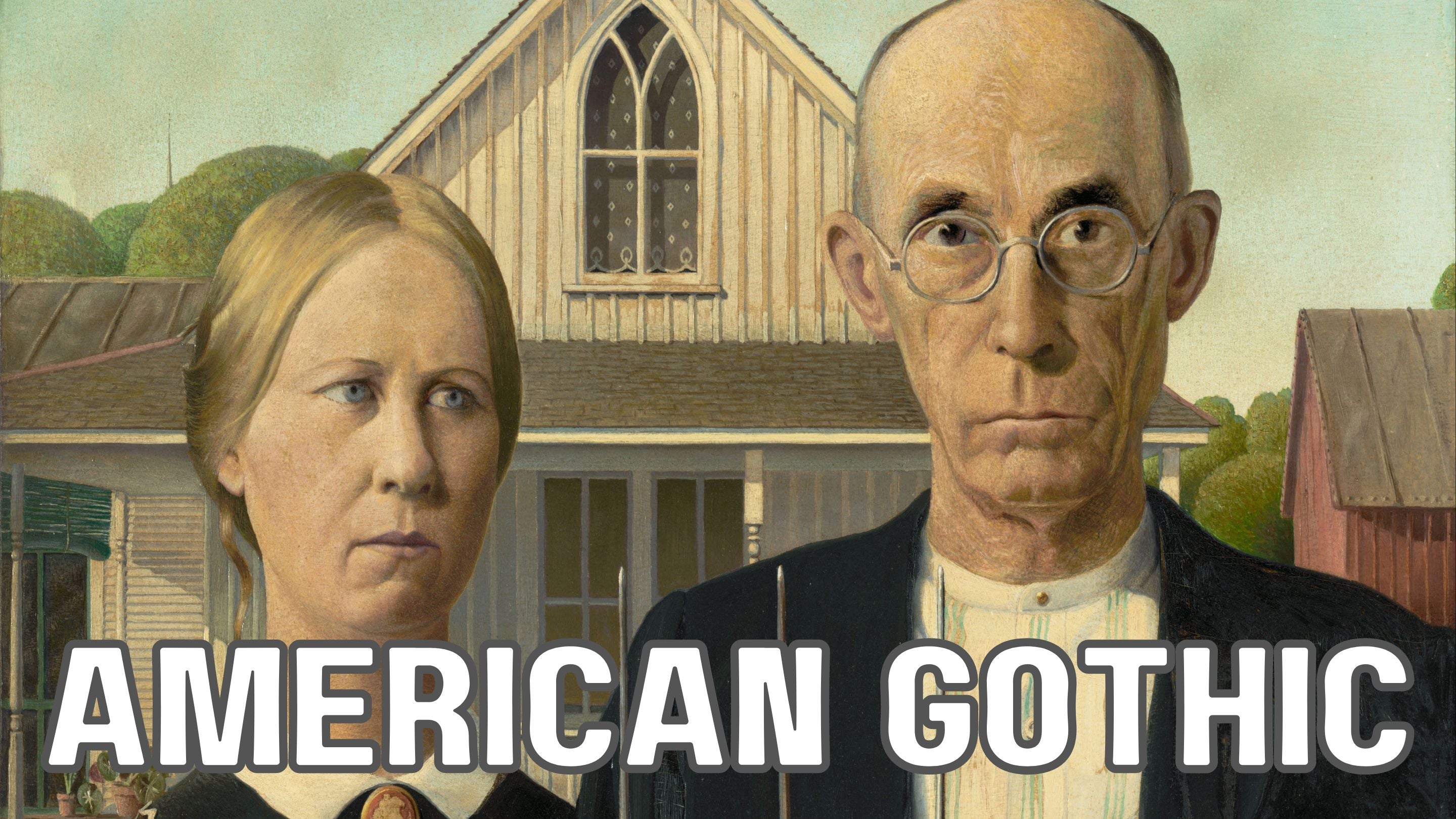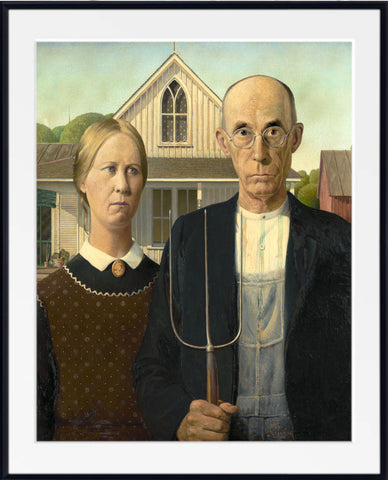Table of Contents:[hide]
Introduction
In the realm of American art, few works have achieved the iconic status of Grant Wood's "American Gothic." Painted in 1930, this masterpiece has transcended its artistic origins to become a symbol of American identity and cultural commentary. In this SEO-optimized article, we will explore the historical context, artistic elements, and enduring significance of "American Gothic."
1. The Genesis of American Gothic
1.1 Grant Wood's Background
Grant Wood, an American painter born in 1891, played a pivotal role in the Regionalist art movement. Hailing from Iowa, Wood drew inspiration from his rural surroundings and sought to capture the essence of American life.
1.2 The Great Depression's Influence
Painted in the midst of the Great Depression, "American Gothic" reflects the economic hardships and changing societal dynamics of the era. Wood's work serves as a poignant snapshot of the challenges faced by rural America during this tumultuous time.
2. Decoding the Composition
2.1 The Characters: Farmer and Daughter
The central figures of the painting are a stern-faced farmer and his daughter. Their stoic expressions convey a sense of resilience in the face of adversity, embodying the spirit of the American people during a challenging period.
2.2 Architectural Symbolism
The backdrop of the painting features a Gothic-style window, giving the artwork its name. The window symbolizes the values of conservatism and traditionalism, mirroring the enduring American spirit and its connection to rural life.
2.3 Contrasts and Irony
Wood juxtaposes the seriousness of the characters with a touch of irony. While the figures exude solemnity, there is a subtle humor in their exaggerated, almost caricatured features. This dual nature prompts viewers to reflect on the complexity of the American experience.
3. Artistic Techniques and Style
3.1 Precision and Realism
Wood's meticulous attention to detail and realistic portrayal of the characters contribute to the painting's enduring appeal. Each element is carefully rendered, from the folds of clothing to the weathered features of the farmer's face.
3.2 Use of Light and Shadow
The play of light and shadow in "American Gothic" adds depth and dimension to the composition. The stark contrasts enhance the seriousness of the subjects, emphasizing the gravity of the socioeconomic challenges faced by the nation.
3.3 Regionalist Aesthetic
As a proponent of Regionalism, Wood sought to celebrate the unique character of American rural life. The meticulous representation of the farmhouse and the choice of everyday people as subjects align with the Regionalist aesthetic, championing the ordinary in an extraordinary manner.
4. Enduring Legacy and Cultural Impact
4.1 Symbol of Resilience
"American Gothic" has endured as a symbol of American resilience and strength in the face of adversity. The enduring appeal of the painting lies in its ability to resonate with audiences across generations, transcending its initial historical context.
4.2 Parodies and Homage
The painting has become a cultural touchstone, inspiring numerous parodies and homage across various media. Its influence extends beyond the realm of fine art, permeating popular culture and cementing its status as an emblematic piece of American iconography.
4.3 Critical Reception and Interpretations
Over the years, art critics and scholars have offered diverse interpretations of "American Gothic." Some view it as a straightforward depiction of rural life, while others see it as a commentary on societal norms and values. The painting's ability to elicit varied responses underscores its complexity and enduring relevance.
Frequently Asked Questions (FAQs)
1. Why is it called "American Gothic"?
The painting is named after the Gothic-style window featured prominently in the background. The term "Gothic" in the title refers to the architectural style, adding a layer of symbolism to the work.
2. Who are the subjects in "American Gothic"?
The central figures are a farmer and his daughter. Their stern expressions and traditional attire contribute to the painting's portrayal of resilience and the enduring spirit of rural America.
3. What is the significance of the Gothic window in the painting?
The Gothic window symbolizes conservatism and traditionalism. It serves as a backdrop that contrasts with the characters, emphasizing the enduring values associated with rural life.
4. How did the Great Depression influence the creation of "American Gothic"?
Painted during the Great Depression, the work reflects the economic hardships and challenges faced by rural America. The stoic expressions of the subjects capture the resilience of the American people during this difficult period.
5. What is Regionalism, and how does it relate to "American Gothic"?
Regionalism is an artistic movement that celebrates the unique character of a specific region. Grant Wood, as a Regionalist painter, aimed to depict the everyday life of rural America. "American Gothic" aligns with this aesthetic by portraying ordinary people in a dignified and heroic manner.
6. Why does "American Gothic" continue to be relevant today?
The painting's enduring relevance lies in its ability to symbolize American resilience. Its dual nature, blending seriousness with subtle humor, allows for varied interpretations, making it a timeless reflection of the complexities of the American experience.
In conclusion, Grant Wood's "American Gothic" stands as a testament to the power of art to capture the spirit of a nation in times of challenge. Its meticulous composition, nuanced symbolism, and enduring legacy contribute to its status as a cornerstone of American art history. As we continue to navigate the twists and turns of the 21st century, "American Gothic" remains a compelling and relevant exploration of the American identity.


